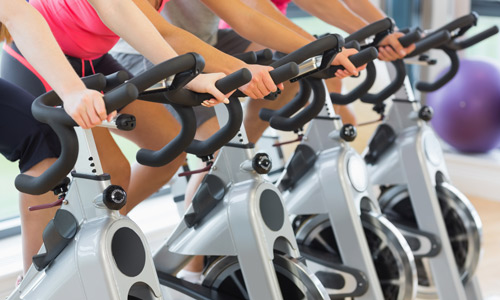What is continuous training?
This style of training typically involves aerobic activities such as running, biking, swimming and rowing. These activities use large muscle groups performing repetitive movements over a prolonged period of time. It can be performed at a low, moderate or moderate/high intensity depending on what you want to achieve from the training and your current fitness levels.
What is continuous training good for?
Continuous training requires your body to use oxygen to produce energy which means it will improve your respiratory system (your lungs and breathing) and also your cardiovascular system (your heart).
It is great for building cardiovascular endurance and by improving your heart and lung function you will be able to cope with everyday tasks much easier without getting out of breath.
Those of you who are looking to lose weight may find that continuous exercise can be very beneficial. As it uses large muscle groups this means that it burns a lot of calories even when it is performed at a relatively easy intensity.
Continuous exercise can also be therapeutic and stress relieving for some who find it helps them to switch off from the pressures of work or family life for the time they are performing it.
When should you do continuous training?
If you are new to exercise then continuous exercise is a great way of building a good level of cardiovascular fitness before moving onto more advanced methods of training such as intervals or high intensity interval training (HIIT). It is relatively easy to perform, and low impact choices such as a bike or cross-trainer are suitable for those who carry excess weight or cannot perform impact exercise.
Using one of the cardiovascular machines in your gym you can monitor your heart rate by placing your hands on the heart rate sensors and ensure you are training between 60-70% of your maximum heart rate to gain the most benefit from your training.
To work this out use the following equation.
- (220 – Age) x0.6 = 60% = Target minimum heart rate
- (220 – Age) x0.7 = 70% = Target maximum heart rate
Those who are training for an endurance event such as a marathon, triathlon or bike ride should include some continuous exercise in their training as it allows you to get in the all-important mileage needed for a base level of fitness which cannot be achieved through interval training.
Physiological Benefits
One of the primary benefits of continuous training is it demands a lot of oxygen.
This enhances respiratory function (which further benefits the lungs and breathing systems) and also contributes to the improvement of the cardiovascular system.
This dual impact on heart and lung function facilitates easier completion of everyday tasks without experiencing the breathlessness and fatigue that can be caused by poor function in either of these areas.
Intensity and adaptability
Continuous training can be adapted to various intensity levels, from low to moderate or even moderate/high, making it suitable for individuals with different fitness goals and abilities.
This adaptability allows newcomers to fitness to gradually build cardiovascular endurance before progressing to more advanced training methods like intervals or high-intensity interval training (HIIT).
Build your endurance
Endurance athletes preparing for events like marathons, triathlons, or long bike rides can benefit significantly from incorporating continuous training into their regimen. It provides the necessary mileage crucial for building a solid base level of fitness that might be challenging to achieve solely through interval training.
Weight management and stress relief
Continuous training engages large muscle groups, making it a great way to exercise if weight management is a priority. It burns a significant number of calories even at moderate intensities and is highly accessible for most people.
Beyond these physical benefits, continuous exercise can also help relieve stress for those seeking a respite from the pressures of work or family life. It's not uncommon for people to cite the mental health benefits of continuous training exercises like running and cycling.
Example of a continuous training session on a bike

- 5 minute warm up gradually building your heart rate up to 60% max HR.
- Cycle 30 minutes on a stationary bike at a target heart rate of 70% max HR
- 5 minute cool down letting your heart rate return below 60% max HR
Last updated Tuesday 23 January 2024
First published on Tuesday 5 January 2016

